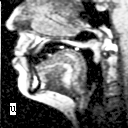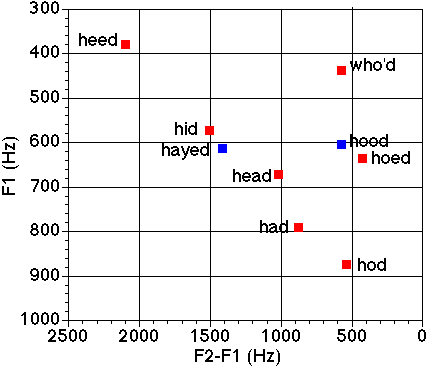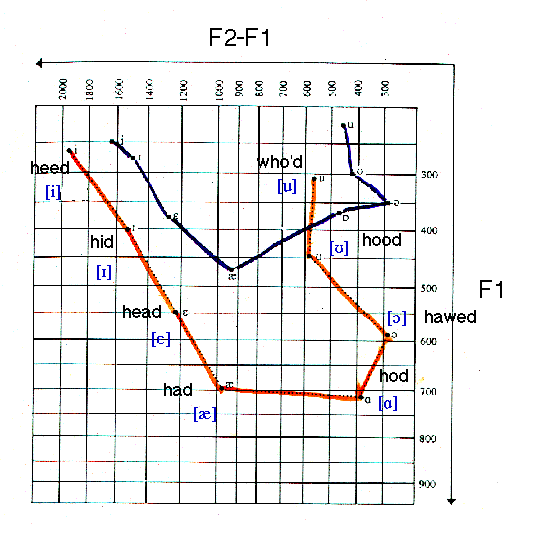 |
 |
 |
|
|
|
|
Each vocal tract shape has a characteristic filter function that can be calculated from its size and shape.
Filter functions for three vowels are shown
below.
(Vertical lines represent 1000 Hz
increments)
The vowels differ systemtically in the frequencies of the first two
formants (F1 and F2):
 |
 |
 |
|
|
|
|
We can filter the glottal source recording through each of these filter functions. Click on filter functions to hear.
Formant frequencies of English vowels
Filter functions for the set of English vowels are shown next to the vocal tract images in this figure.
The vowels in the left column are called "front vowels."
Tongue body is in the front of the mouth.
All vowels show a "gap" in frequency between F1 and F2.
The height of the tongue in the mouth is inversely related to F1.
The vowels in the right column are called "back vowels"
Tongue body is in the back of the mouth.
All vowels show F1 and F2 quite close in frequency.
The height of the tongue in the mouth is inversely related to F1.
A traditional "vowel diagram" can be obtained by plotting the vowel formants in a graph where the horizontal axis is (F2-F1) and the vertical axis is inverse F1.
Here is a vowel formant plot of the vowels shown in the figure with the MR images.

Information in F1 and F2
The values of the frequencies of F1 and F2 are sufficient to distinguish most vowel contrasts in most languages. Click on the red squares in the formant chart above to hear a vowel sound synthesized by setting F1 and F2 to the values in the chart, but keeping all the other formant values the same.
Speaker-dependence of Formant values
The actual values of the formant frequencies will depend on the head size (or vocal tract length) of the speaker. So it is not the absolute values of the formant frequencies that specify phonetic gestural information.
